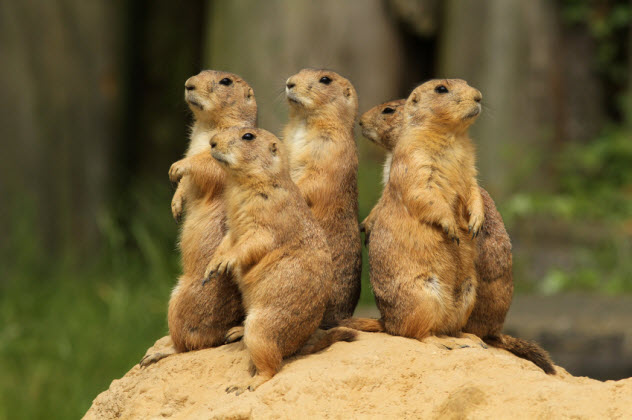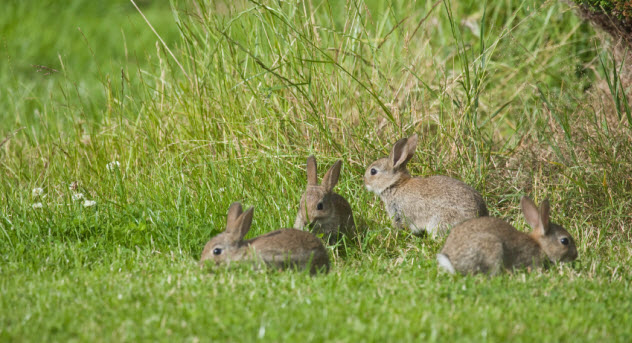 Mysteries
Mysteries  Mysteries
Mysteries  History
History 10 Surprising Stories About the Texas Rangers
 Humans
Humans 10 Philosophers Who Were Driven Mad by Their Own Theories
 Miscellaneous
Miscellaneous 10 Video-Game-Worthy Weapons and Armors from History
 Weird Stuff
Weird Stuff 10 Psychics Who Accurately Predicted Wartime Events
 The Arts
The Arts 10 Pieces of Art Inspired by a Broken Heart
 Health
Health 10 Science Fiction-Sounding New Medical Treatments
 History
History 10 Surprising Facts About the Father of Submarine Warfare
 Space
Space Ten Astonishing New Insights into Alien Worlds
 Weird Stuff
Weird Stuff 10 Bizarre Summer Solstice Rituals Still Practiced Today
 Mysteries
Mysteries Top 10 Haunting Facts About the Ghost Ship MV Alta
 History
History 10 Surprising Stories About the Texas Rangers
 Humans
Humans 10 Philosophers Who Were Driven Mad by Their Own Theories
Who's Behind Listverse?

Jamie Frater
Head Editor
Jamie founded Listverse due to an insatiable desire to share fascinating, obscure, and bizarre facts. He has been a guest speaker on numerous national radio and television stations and is a five time published author.
More About Us Miscellaneous
Miscellaneous 10 Video-Game-Worthy Weapons and Armors from History
 Weird Stuff
Weird Stuff 10 Psychics Who Accurately Predicted Wartime Events
 The Arts
The Arts 10 Pieces of Art Inspired by a Broken Heart
 Health
Health 10 Science Fiction-Sounding New Medical Treatments
 History
History 10 Surprising Facts About the Father of Submarine Warfare
 Space
Space Ten Astonishing New Insights into Alien Worlds
 Weird Stuff
Weird Stuff 10 Bizarre Summer Solstice Rituals Still Practiced Today
10 Diseases That Are Wiping Out Entire Species
Wild animals live exhilarating lives. When they’re not dozing off or foraging, they’re hunting or being hunted. With poaching and habitat loss looming right over their heads, it’s easy to dismiss a much quieter threat on the horizon: disease. Some diseases can eat through these wild populations and leave mass destruction in their wake.
10 Ebola

Thanks to the media and recent outbreaks in Africa, Ebola has been accumulating an infamous reputation. Formerly known as Ebola hemorrhagic fever, it was discovered in 1976 in the Democratic Republic of Congo. Bats and other animals may be responsible for carrying this deadly disease, which is easily spread from person to person through bodily fluids.
After becoming infected, the first thing you’d feel is a fever and sore throat. Then more ominous symptoms will set in: external and internal bleeding, the shutting down of the kidneys and liver, and worst of all, death. The disease has ravished waves of the human population, but it has also latched onto another species that is similar to our own: the great apes.
Africa is home to a wide variety of primates, including a large population of chimpanzees in Guinea and western lowland gorillas in Central Africa. In just 40 years, Ebola has vanquished about one-third of the world’s species, critically endangering the gorillas’ lives.
Thanks to numerous epidemics in the past years, entire populations have simply ceased to exist. Understandably, researchers are scrambling to shed light on the devastating impact that the disease has on humans, leaving the great apes hidden in the dark. It’s already hard enough to save our own kind, but will we still have enough stamina left to help our distant animal relatives? Many experts certainly haven’t given up hope.
9 Canine Distemper

Dog owners have certainly heard of this one. Canine distemper is a very serious viral disease with no known cure. Incredibly contagious, it is spread through the air or merely by touch, and the virus will initially hide inside the body as a high fever before sharpening its claws and taking the life of the canine.
Infected dogs have bloodshot eyes, fatigue, coughing, and vomiting. As the disease crawls through the nervous system, seizures and paralysis occur. It’s just another reason to make sure that your pets are properly vaccinated.
Despite its name, canine distemper isn’t picky and doesn’t infect just dogs. Numerous carnivores in the wild have fallen prey to it, including big cats, wolves, and foxes. Siberian tigers are already dwindling to nothingness due to habitat loss and poaching, but their extinction may be accelerated with so many falling ill.
One population even plummeted from 38 individuals to only nine. They’re not safe in zoos, either. Outbreaks are occurring all over the feline enclosures. On top of that, this disease affects their brains and makes them fearless. If the seizures don’t finish them off, then the poachers and villagers will.
The virus often leads to brain damage, causing the wild tigers to roam closer to villages and roads. Additionally, it is also bringing down scores of African wild dogs. It is easy for the virus to dominate a breeding pack due to its ability to spread quickly and effectively.
8 Sylvatic Plague

It’s common knowledge that the bubonic plague ravished Europe in the 1340s, killing around 25 million people. What most don’t know, however, is that recent eruptions of a similar disease, sylvatic plague, have decimated numerous prairie dog towns on the Fort Belknap Reservation.
More than 3,000 acres have become infected. Although it’s bad enough for the prairie dogs, it’s also drastically affecting the predators that depend on them. The black-footed ferret is one of the most endangered mammals. Their entire lives center around prairie dogs, either by using their burrows as shelters or hunting them down to feed their hungry kits. If these rodents perish, then chances are that the ferrets will, too.
Fortunately, there may be a way to combat this issue. Prairie dogs love peanut butter, and it is being used as a surprising arsenal against the plague. Researchers are mixing the bait with vaccines and scattering it all over the habitat. Along with injecting the wild ferrets with more of the vaccine and spraying flea-killing insecticide around the burrows, we can only cross our fingers and hope that the ecosystem will overcome the difficulties and flourish.
7 Chronic Wasting Disease

Threatened populations of deer and elk have come a long way. Facing extinction in 1957 with only 27 individuals left, Key deer, a Florida species, have gradually increased their numbers to about 800. However, species such as the Virginia white-tailed deer are still endangered due to car collisions, human interactions, and a threat known as chronic wasting disease (CWD).
Similar to its relative, mad cow disease, CWD attacks the brain and is ultimately fatal. The victims show a deterioration of the body and alterations in behavior. They will carry their heads and ears lowered and walk in repetitive courses, with excessive drinking and salivation. Unfortunately, death is inevitable, but methods can be used to contain the disease, including quarantine and depopulation.
6 Whirling Disease

The fish in rivers are threatened by an invisible predator—a crippling illness that forces them to swim in dizzying circles. Primarily affecting the trout and salmon family, this disease deforms their cartilage and twists their bodies to make it difficult for them to forage or escape from attackers.
In weaker fish, it could outright kill them. Myxobolus cerebralis is a parasite that first crept from Europe to America in the 1950s and now lurks in 25 states. Once it has rooted itself in a stream, it is impossible to remove without severely damaging the ecosystem.
Whirling disease has proven to be devastating to the coldwater fisheries in North America. However, even though this parasite is resilient, measures can be taken by anglers and boaters to reduce its spread. Live fish must not be transported from one lake to another, and it is important to rinse all debris from equipment before leaving an infected area. Whirling disease is not as severe as Ebola or canine distemper, so there is a good chance that the trout and salmon of North America can be protected.
5 PBFD Virus

PBFD virus (aka psittacine beak and feather disease) preys on parrots, cockatoos, macaws, and lovebirds. Aside from pet birds, PBFD also stalks the more endangered, tropical kinds of birds, such as the New Caledonian rainbow lorikeets, which fly on to spread the disease to neighboring species.
It is a savage disease. Young birds rarely survive, but if they do, the virus may hide among their feathers and be transmitted to others. It spreads like wildfire. Direct contact, inhalation, contaminated surfaces, and feather dust can all lead to devastating consequences.
This disfiguring virus is hard to miss. Irreversible damage to feathers, molting, twisted beaks, lesions, and weight loss are all symptoms. There is no cure. However, just like all diseases affecting either animals or humans, there will always be a team dedicated to its research. Conservationists are finding ways to protect threatened wild bird species. Perhaps vaccines are not far off.
4 Sarcoptic Mange

Sarcoptic mange is caused by mites that burrow into the skin, causing intense itching and hair loss. Then the area is often infected by bacteria. If left untreated, sarcoptic mange leads to death after weight loss and organ damage.
The illness is spread through direct contact with infected carcasses and living animals. It can also be carried in burrows that had previously been in contact with an infected animal. Foxes can be seen carrying the disease, which makes a bold statement through cracked, bare skin and flaky patches.
But the disease is also seen in wombats, lynxes, wolves, and other animals. Sarcoptic mange can wreak havoc among small, threatened wildlife populations. For example, it has wiped out all of the red foxes on the island of Bornholm, Denmark.
3 Herpes

Herpes is already overwhelming the human population, but what happens when it invades a wild one? For the past few years, 17 percent of sea lions have been diagnosed with a cancer that struck females in the cervix and males in the penis and prostate.
Unexpectedly, the culprit is a disease that most of us have heard of. This specific herpes causes a cancer that is already fatal in itself. It paralyzes sea lions by attacking their spinal cords, causing the animals to die or wash up on shores.
The Marine Mammal Center in Sausalito has already seen a grievous number of deaths, including one that involved a male sea lion with its lower body paralyzed and hind flippers swollen from cancer. “It’s pretty distressing to see,” said Dr. Frances Gulland, the director of veterinary science at the center.
Sea lions are not the only ocean-dwelling animals in danger. Several beluga whales have been found with intestinal tumors that are linked to industrial pollutants. Contaminants found in fish and blubber may be blamed and can also be passed from mothers to babies.
“These are top-level predators,” Gulland explained. “Like us, they eat anchovies, squid, salmon, and mussels—they are sentinels for human health because they share our ecosystems and prey. We may see impacts in sea lions before people—they could be an early warning.”
2 Endangered Parasites

When you mention an endangered species, people rarely think of the parasites themselves. They are far from cute and cuddly, and worst of all, they carry deadly diseases—or at least, most of them do.
Kakapos, those reclusive, flightless green birds from New Zealand, number less than 200. With extensive care and breeding programs, they are starting to return from the brink of extinction. Unfortunately, though, it is too late to save Stringopotaenia psittacea, a tapeworm, from oblivion.
With the dwindling of its kakapo hosts, it has disappeared for good. Lice from California condors and parasites from the now-extinct spotted kiwis have also met unhappy fates. But why worry? After all, parasites are known to cause disease, suffering, and death.
However, few people realize that not all parasite species are harmful. For example, chicks of the Eurasian oystercatchers died when they were infected with fewer parasites. As a result, scientists believe that some level of parasitic infection actually helps to build immunity. Additionally, exposure to these parasites while young can make the animal more resistant to them later in life, while nonexposure could lead to problems with reproduction.
Therefore, if S. psittacea decides to come back, it could do well to help build the kakapo population. So far, out of all those parasite species, only one has made it to the International Union for the Conservation of Nature’s red list: the critically endangered pygmy hog-sucking louse. While they certainly can’t compare to fluffy pandas or cute seals, maybe our parasites really do need some love.
1 RHDV

In Australia, a different type of plague has been happening for years—namely, a plague of rabbits. Able to produce numerous kits a year, wild rabbits are destroying the continent’s natural ecosystem by devouring food, forcing other animals away, and destroying flora and fauna.
In 1788, rabbits first arrived when early colonists attempted to make Australia as much like Europe as possible. By the 1920s, the number of rabbits had exploded to 10 billion. Fire and poison have all been used in an attempt to reduce their populations, but the rabbit hemorrhagic disease virus (RHDV) may prove to be the ultimate weapon. It has already taken out 60 percent of the population.
This was definitely good news. Native vegetation bounced back, and kangaroos and mice began to return, including endangered rodents. “It’s become pretty clear that something major has changed,” stated ecologist Reece Pedler.
Without rabbits overgrazing, plants were able to grow back in the arid landscape and provide shelter for native animals. Cats and foxes that had been preying on the rabbits have also declined, which further allowed endangered rodents to flourish. It seems that not all viruses wreak havoc on wildlife, as RHDV certainly proved to be beneficial.








